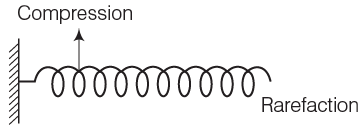Wave | General Awareness for SSC CGL PDF Download
| Table of contents |

|
| Introduction |

|
| Types of Waves |

|
| Nature of Waves |

|
| Definitions Related to Waves |

|
Introduction
Waves are fundamental phenomena in physics that involve the transfer of energy through various mediums. They come in different forms and have specific characteristics based on how they propagate and interact with their surroundings. Understanding waves and their behavior is crucial in numerous fields, from acoustics to optics. Here’s a detailed overview of waves, their types, nature, and related concepts.
Types of Waves
- Those waves which require a material medium for their propagation, are called mechanical waves.
For examples – Sound waves, water waves etc. - Those waves which do not require a material medium for their propagation, are called electromagnetic waves.
For examples – Light waves, radio waves, X-rays etc.
Question for WaveTry yourself: Which type of waves require a material medium for their propagation?View Solution
Nature of Waves
- A wave in which the particles of the medium vibrate at right angles to the direction of propagation of wave, is called a transverse wave.
- These waves travel in the form of crests and troughs.

- In a transverse wave, the position of maximum displacement in the upward direction, is called crest and the position of maximum displacement in downward direction is called trough.
- A wave in which the particles of the medium vibrate in the same direction in which wave is propagating, is called a longitudinal wave.
- These waves travels in the form of compressions and rarefactions as shown below

- When a longitudinal wave propagates in a medium, the density and pressure becomes maximum at few points and minimum at other few points, these points are called compressions and rarefactions.
- Longitudinal waves can be produced in solid, liquid and gases. Transverse waves can be produced in solids and on the surface of a liquid but cannot be produced in the interior of a liquid or in a gas.
Definitions Related to Waves
- The distance between two nearest points in a wave which are in the same phase of vibration, is called the wavelength ( λ ).
- Time taken to complete one vibration, is called time period (T).
- The number of vibrations completed in one second, is called frequency of the wave.

Its SI unit is hertz.
Superposition and Interference of Waves
- Two or more progressive waves can travel simultaneously in the medium without effecting the motion of one another. Therefore, resultant displacement of each particle of the medium at any instant is equal to vector sum of the displacements. This principle is called principle of superposition.
- On the other hand, when two waves of same frequency stand in the medium in the same direction, then the resultant intensity due to their superposition, at a point, is different from the sum of intensities of two waves. This phenomenon is called interference.
The document Wave | General Awareness for SSC CGL is a part of the SSC CGL Course General Awareness for SSC CGL.
All you need of SSC CGL at this link: SSC CGL
|
448 videos|1497 docs|288 tests
|
FAQs on Wave - General Awareness for SSC CGL
| 1. What are the different types of waves? |  |
Ans. The different types of waves include mechanical waves, electromagnetic waves, surface waves, and seismic waves.
| 2. What is the nature of waves? |  |
Ans. Waves are a disturbance that travels through a medium, transferring energy from one point to another without displacing the medium itself.
| 3. What is the definition of amplitude in waves? |  |
Ans. Amplitude in waves refers to the maximum displacement of a particle from its equilibrium position during one wave cycle.
| 4. How are waves classified based on their direction of vibration? |  |
Ans. Waves can be classified as transverse waves or longitudinal waves based on the direction of vibration of the particles in the medium.
| 5. What are some common examples of waves encountered in everyday life? |  |
Ans. Some common examples of waves encountered in everyday life include sound waves, water waves, light waves, and radio waves.
Related Searches















